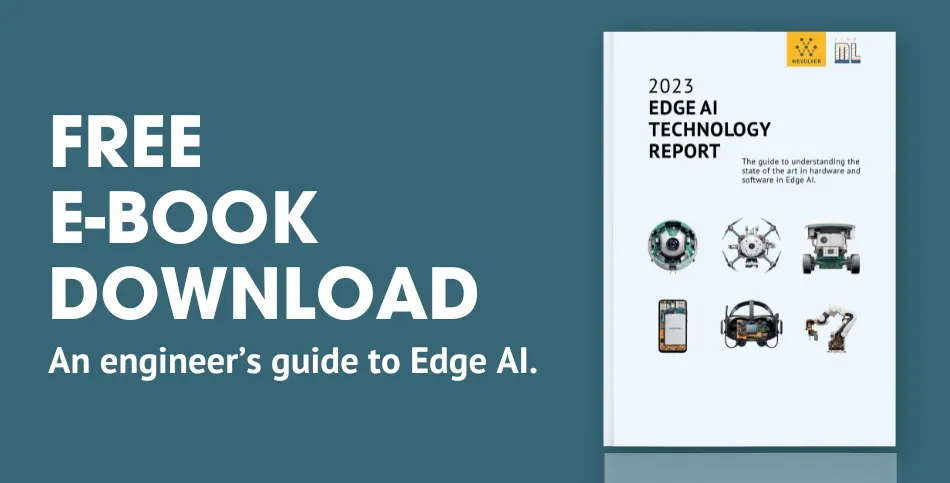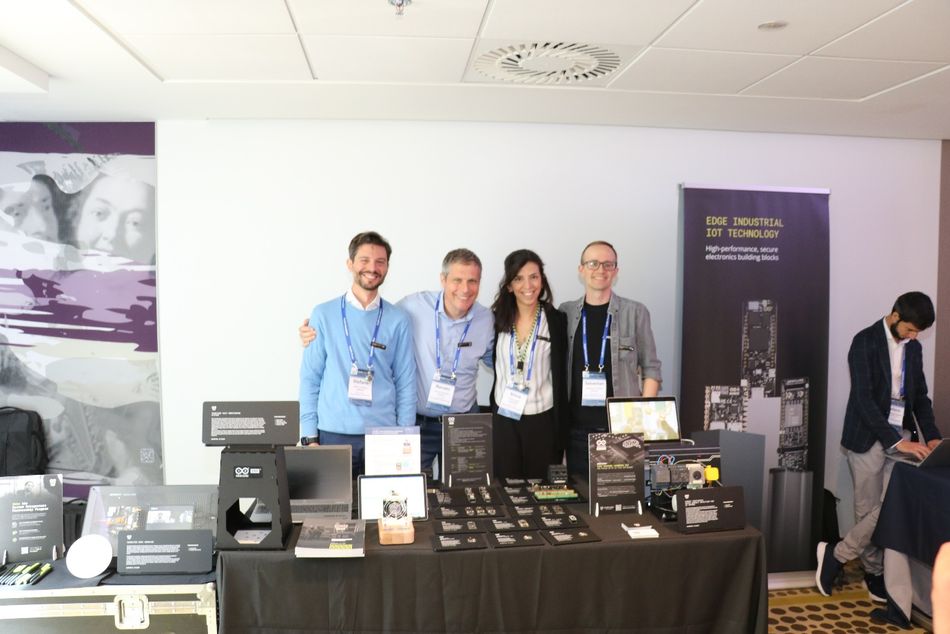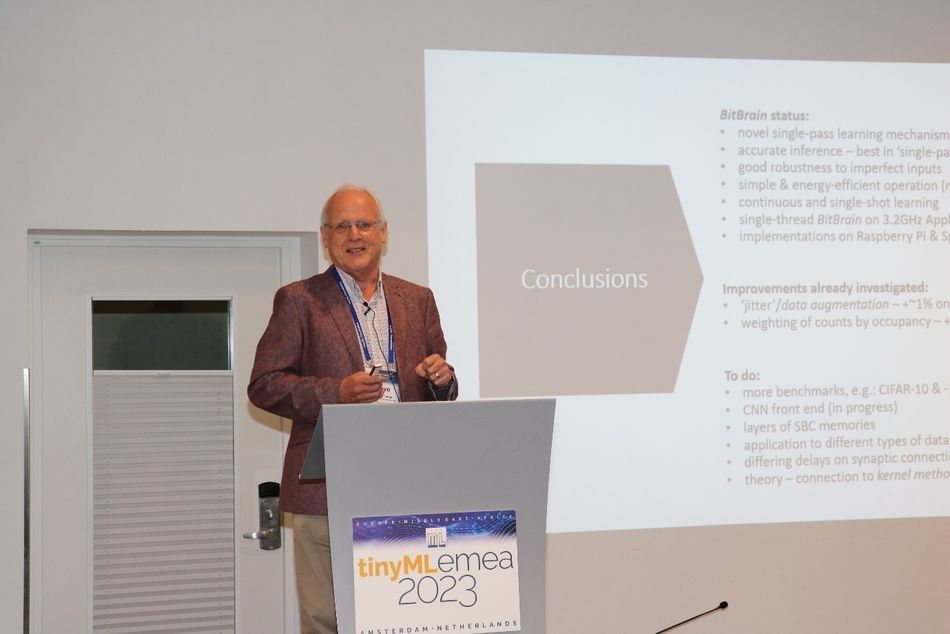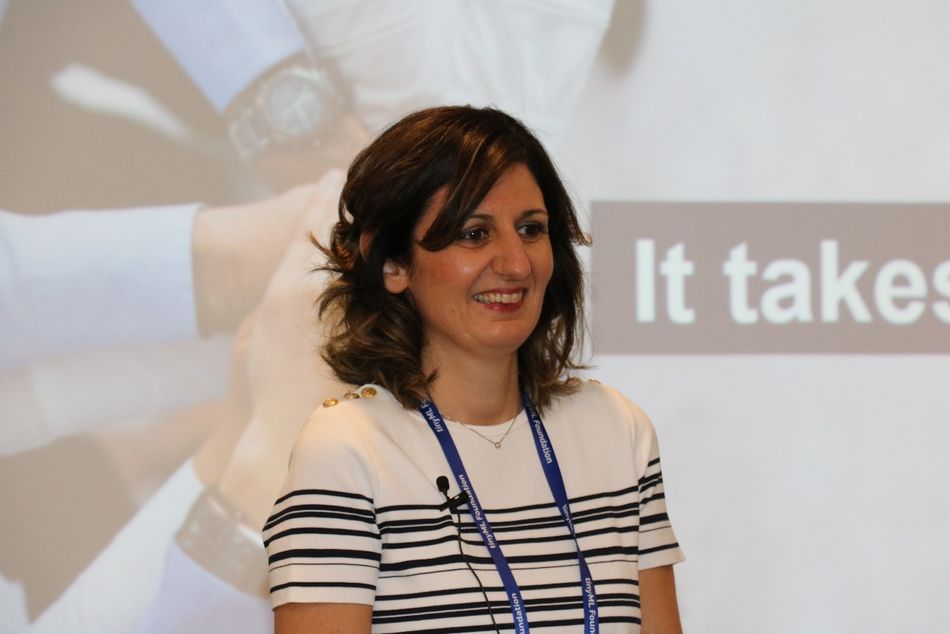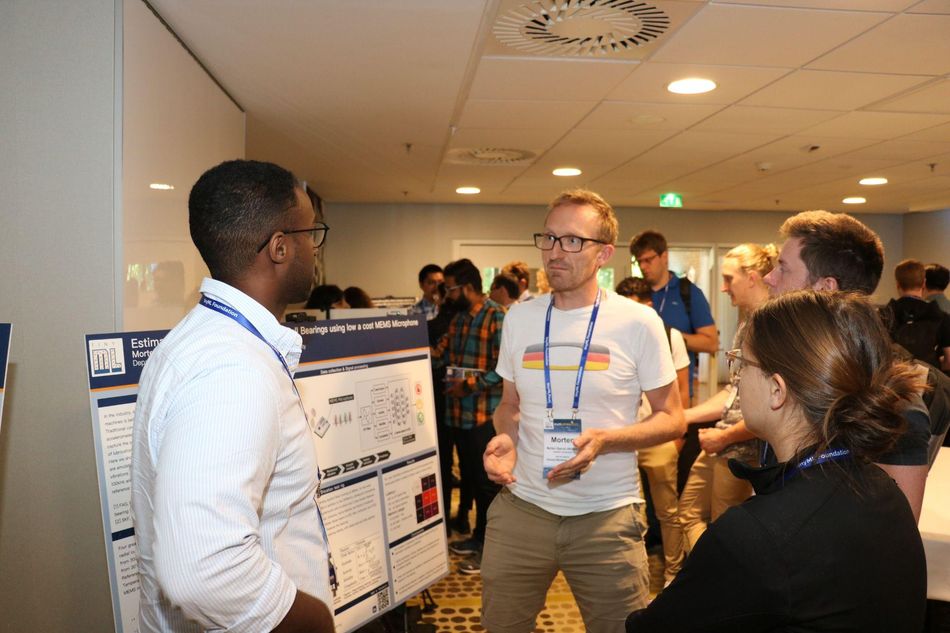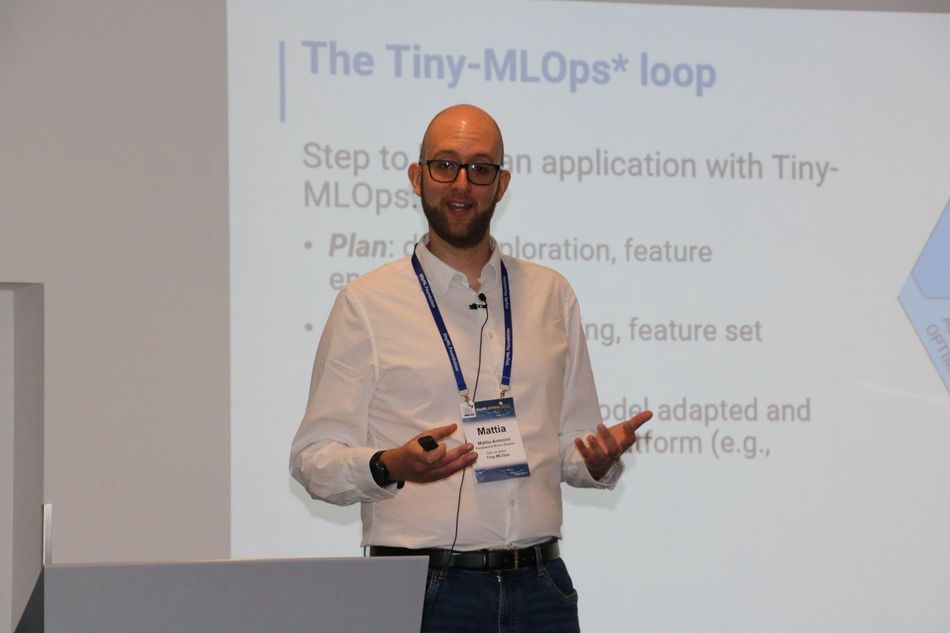Third Annual tinyML EMEA Innovation Forum: Exploring tinyML Advancements and Future Directions
Highlights from the 3rd Annual tinyML EMEA Innovation Forum include exploring hardware developments, algorithm optimization, and deploying MLOps tools.

The 3rd Annual tinyML EMEA Innovation Forum, which took place in Amsterdam from June 26-28, recently wrapped up. One of the objectives of the event was to unite the tinyML EMEA Community to empower and accelerate Innovation and Partnerships. The event drew a diverse range of participants, speakers, and sponsors, all converging to engage in insightful discussions and share ideas about the most recent developments and promising future of energy efficient machine learning at the edge - tinyML.
The tinyML movement which started in 2019, has developed into an international ecosystem that brings together various researchers, markets, and time zones. The three-day event aimed to foster collaboration within the tinyML EMEA region community, featuring a state-of-the-artprogram to delve into the forefront of tinyML.
This article was contributed to by Alessandro Grande (tinyML EMEA 2023 Chair) of Edge Impulse (Italy), Hajar Mousannif (Vice Chair) of Cadi Ayyad University (Morocco), Thomas Basikolo of ITU/UN (Switzerland), Valeria Tomaselli of STMicroelectronics (Italy), Dirk Staneker of Bosch (Germany), Andrea Dunbar of CSEM (Switzerland), Martin Crome of Greenwaves Technologies (France), Evgeni Gousev of Qualcomm (USA) and Sumeet Kumar of Innatera (the Netherlands).
Forum overview
The first day of the forum explored recent advances in tinyML, its challenges, and opportunities. Industry experts and visionary researchers presented their insights on tinyML's potential to address pressing global issues, thus facilitating a shift towards an environmentally sustainable, inclusive, and secure world.
Day two focused on the essential tools and techniques necessary for the speedy adoption of tinyML. The forum introduced the latest tools for application development, from data collection to model deployment. It highlighted innovations aimed at optimizing performance and energy efficiency on-device, which paves the way for highly efficient inference models.
Day three shone a spotlight on the heart and soul of tinyML: hardware and sensors. Participants immersed themselves in the diverse ecosystem of tinyML hardware and sensors, exploring cutting-edge developments such as algae-powered processors.
In addition to the technical sessions, tinyML Partner Companies showcased their latest technologies and products at the exhibition floor.
Keynote and Speaker Review
The event saw a wide variety of industry leaders and influencers speak on the current ideas in tinyML. The reviews and descriptions below have been contributed by session chairs from the event.
Highlights from the forum included Steve Furber, ICL Professor of Computer Engineering at The University of Manchester, who introduced the SBC memory and BitBrain infrastructure, demonstrating its potential for robust inference, continuous and adaptive learning, and efficient operation on conventional and neuromorphic processors. His presentation, titled "A Novel Mechanism for Edge ML," introduced the SBC memory and BitBrain infrastructure, showcasing their innovative synthesis of sparse coding, computational neuroscience, and information theory. Attendees gained valuable insights into this mechanism, its potential for single-pass supervised learning, robust inference, continuous and adaptive learning, and efficient operation on conventional and neuromorphic processors. The successful implementation of the mechanism on Raspberry Pi and SpiNNaker platforms demonstrated its practicality and scalability for edge machine learning applications.
Lisa Trollo from STMicroelectronics delivered an insightful keynote on "Smart, Open, and Accurate: Sensors in the Sustainable Onlife Era." She emphasized the importance of an open sensor ecosystem, enabling intelligent processing at the edge by integrating external sensors with ST MEMS sensors. This collaborative approach accelerates innovation and provides a sustainable competitive advantage. Accuracy in sensing was highlighted as a key factor, enabling complex algorithms and energy savings. ST smart sensors were presented as contributors to carbon neutrality, making a significant impact on environmental sustainability in various applications.
Wednesday’s keynote was an excellent presentation by Prof. Marian Verhelst of KU Leuven and tinyML Board Director. Prof. Verhelst spoke about energy efficiency and programmability/flexibility drive heterogeneous architectures with a mix of multicores of digital accelerators and highly efficient compute in memory cores, targeting 30-300 TOPS/W performance. Carbon footprint considerations were also addressed with a chiplet approach proposed as a path forward for scalable and efficient tinyML.
The “tinyML in the Real World” track
This highly anticipated track covered the latest advancements in small-scale machine learning and their real-world applications, examining the opportunities and challenges of developing such solutions and addressing societal issues and Sustainable Development Goals (SDGs) through them.
Sandeep Mistry from Arm presented “How to build an ML-powered doorbell notifier” which discussed an end-to-end solution incorporating Machine Learning and Microcontroller technologies. The solution emphasized privacy-preserving on-device ML inferencing and included a live demonstration.
Another talk by Lina WEI from 7 Sensing Software discussed the titled “Monitoring of Vital Signs using Embedded AI in wearable devices.” The focus was on utilizing Photoplethysmography (PPG) signals for Respiratory Rate Monitoring and employing a Tiny ML-based algorithm to handle real-world and complex PPG signals. The performance achieved by this algorithm was comparable to medical-grade devices.
The “MLOps, Development and Deployment tools” track
This track covered the tools enabling tinyML technology. Presentations in this session dealt with tools that simplify and optimize the integration of machine learning into embedded systems. Louis Moreau from Edge Impulse presented the newly-released Python SDK, Kathrin Gerhard from Bosch showcased the MILEA (Machine Intelligence Library for Embedded Applications) library, explaining how to achieve flexibility in a safety related environment, like the automotive one.
Another interesting talk by Paola Andrea Jaramillo Garcia from Mathworks analyzed how to cope with real world effects like performance degradation due to aging, using Matlab and Simulink. Finally, Mattia Antonini from FBK (Fondazione Bruno Kessler) presented a complete Tiny-MLOps framework, showing its usage in an underwater pump available in a wastewater management plant, with the possibility to perform onboard training/inference and monitoring.
Algorithms and Optimization Techniques Track
This track looked at several current optimization techniques being used for tinyML devices to push them onto the market. This included looking at quantization, including quantization aware training and post-training quantization and pruning. Applications tested were real-time speech enhancement and speaker detection systems. Significant energy efficiencies were shown through post training quantization on Greenwaves, GAP9 with its 8 cores for real-time speech enhancement. Whilst data fusion (audio and video) for speaker detection systems showed high accuracy with <2M MACs on an MPU (ARM Cortex A53).Presentation from Qualcomm AI Research Center in Amsterdam by Mart van Baalen revealed advances in quantization for efficient on-device inference of deep learning models, including gaining popularity transformer models. He summarized low precision numerical format and drove a conclusion that, for on-device inferencing, (integer) INT8 format provides most benefits. Quantization aware training (QAT) concept and approach were also introduced to achieve optimal performance results.
A key theme throughout the algorithm and optimization track and even more widely is the challenge of benchmarking tinyML devices. A round table was set up with key leaders in the field Martin Croome (Greenwaves), Petrut Bogdan (Innatera) and Thomas Basilkolo (ITU), who gave their vision on this challenging topic. Use-case based benchmarking with standard data sets remains the preferred choice. Key challenges however remain in this area such as down-time, robustness, imperfect data, data movement and data pipeline all of which need to be considered when benchmarking devices.
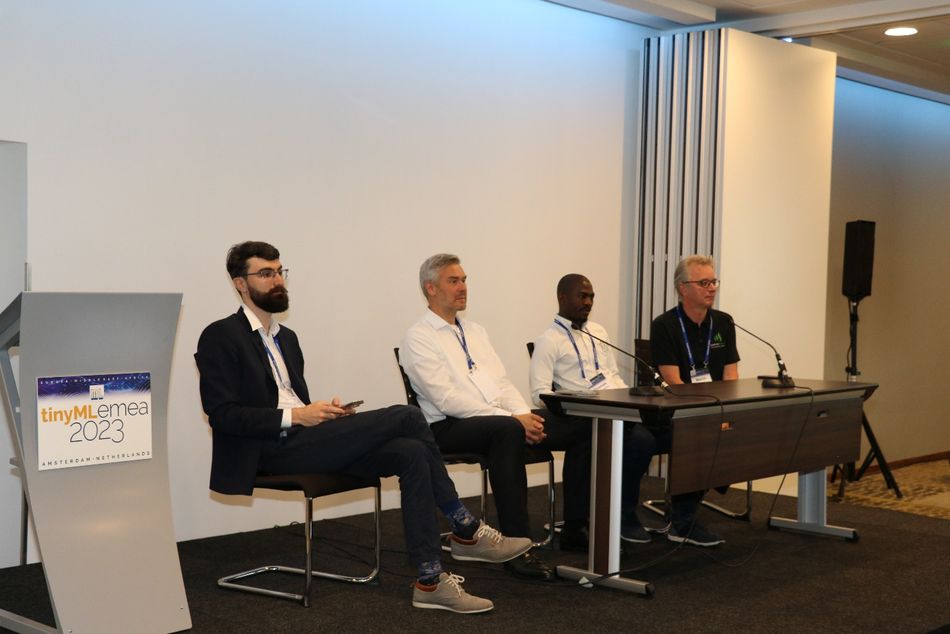
The Algorithm and optimization Techniques track continued with a look at the tradeoffs necessary to implement training on very small MCUs without acceleration, an open source set of neural network kernels for RISC-V processors and an intriguing analysis of the quantization accuracy of reduced precision float and fixed point data types and some exciting new solutions to quantization issues such as oscillation in fake quantizers and outliers in transformer networks.
Hardware Session Overview
Hardware has always been center stage in the tinyML ecosystem and the Hardware Track at the EMEA forum was no different! The session was as diverse as the tinyML ecosystem itself. The first speakers Gianmarco Iodice and Paolo Bombelli opened the track with a unique tinyML solution for environmental monitoring, powered by algae. Their presentation showed the true potential of tinyML at the intersection of the digital and physical worlds, with what the authors called the world’s first ML application of its kind on an ARM-based microcontroller.
Always-on sensing is a common theme in many tinyML applications, and power efficiency is almost always an important concern. Christoph Posch addressed this in his presentation on event-based imaging with Prophesee’s latest sensors. He highlighted the strong match that exists between always-on imaging applications and event-based imagers, and did this by diving deep into how Prophesee’s sensors carry out a number of common image processing steps with event-based equivalents.
Emmanuel Hardy concluded the morning session, presenting a practical end-to-end ultrasonic gesture recognition system using spiking recurrent neural networks for classification. Emmanuel’s presentation highlighted the growing importance of neuromorphic computing in power-limited sensing use-cases, and provided a holistic view of how sensing and processing advancements come together to create value in practical tinyML applications.
Looking ahead
The third edition of the tinyML EMEA Innovation Forum was a valuable platform for inspiring innovation and fostering collaborations, marking another milestone in the journey towards a brighter future powered by tinyML. Presentations from the event can be found on the tinyML Foundation website (https://www.tinyml.org/event/emea-2023). Full videos are now available on tinyML YouTube channel (www.youtube.com/tinyML) Next tinyML EMEA Innovation Forum will take place in June 2024.
The tinyML forums and symposiums are valuable learning and networking opportunities for engineers, developers, managers, executives, and founders developing sensors, silicon, software, machine learning tools, or systems for the fast growing energy efficient edgeAI market.
The 2023 Edge AI Technology Report
tinyML recently partnered with Wevolver to launch the Edge AI Technology Report, this report, contributed from leading industry experts and researchers, aims to provide a thorough overview of the current status of AI.
Click through to read each of the report's chapters.
Chapter I: Overview of Industries and Application Use Cases
Chapter II: Advantages of Edge AI
Chapter III: Edge AI Platforms
Chapter IV: Hardware and Software Selection
Chapter V: Tiny ML
Chapter VI: Edge AI Algorithms
Chapter VII: Sensing Modalities
Chapter VIII: Case Studies
Chapter IX: Challenges of Edge AI
Chapter X: The Future of Edge AI and Conclusion
